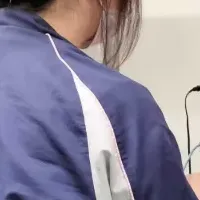
Pusan National University Researchers Introduce Revolutionary UV-Driven Shape-Adaptable Smart Materials
Pusan National University Researchers Introduce Revolutionary UV-Driven Shape-Adaptable Smart Materials
In an exciting development, a research team led by Associate Professor Chae Bin Kim from the Department of Polymer Science and Engineering at Pusan National University, South Korea, has engineered groundbreaking smart materials that can change, fix, and retain their shapes using ultraviolet (UV) light and magnetic fields. This innovative technology presents numerous possibilities across various fields, propelling forward the capabilities of microdevice technology.
The novel materials, referred to as disulfide-based covalent adaptable networks (DS-CAN), consist of magnetic micropillar arrays. These arrays contain tiny, vertical pin-like structures organized in a grid pattern. What sets them apart is their unique capacity to alter shape to a predetermined geometry upon exposure to a magnetic field. Made from magnetically responsive composites that merge polydimethylsiloxane (PDMS) with magnetic particles, these micropillars retain their altered shapes through on-demand exposure to magnetic forces and UV light, marking a significant departure from existing technologies that only maintain shape changes temporarily.
The study published in the journal Advanced Materials presents a solvent- and resin-free strategy for shape fixation. Professor Kim highlights the significance of this advancement, stating that the new materials facilitate UV activation at room temperature, enhancing processing precision and energy efficiency. This paradigm shift enables non-contact and spatiotemporally controlled manipulation of soft polymer materials.
Covalent adaptable networks represent a cutting-edge class of polymers characterized by dynamic covalent bonds capable of breaking and reforming under external stimuli. The research incorporated disulfide bonds into these networks, allowing them to undergo bond exchanges in response to heat or UV light exposure, even at ambient temperatures. Such versatility not only facilitates the repair of damages and the welding of samples together but also enables the reprocessing of pulverized materials into solid forms.
One of the standout features of DS-CANs is their ability to undergo reversible shape fixation after deformation, a striking contrast to traditional thermosetting polymers, which do not revert to their original form. By employing non-equilibrium molecular dynamics and Monte Carlo modeling, the researchers comprehensively analyzed how dynamic disulfide bond exchanges are triggered by heat or UV light.
To illustrate the potential for reversible shape configurations, the team integrated neodymium-iron-boron (NdFeB) particles within the DS-CANs, forming new micropillar arrays that are responsive to magnetic fields. These arrays allow the transformation of shape, which can subsequently be fixed through UV light exposure without the application of a magnetic field, further emphasizing their robustness and versatility. Moreover, this shape-changing capability can be spatially controlled, enabling localized modifications through targeted UV exposure.
In addition to magnetic micropillars, the researchers have also fabricated DS-CAN/NdFeB microdenticles, ribbed pillars that imitate shark skin, showcasing the material's ability to create complex three-dimensional microstructures.
According to Professor Kim, the implications of this research are far-reaching: "Our technology has the potential to revolutionize several domains, including programmable smart surfaces, tunable robotic grippers for delicate shapes, switchable adhesives, and precision-controlled drug delivery systems."
Overall, this research marks a pivotal advancement in the development of smart materials capable of shape changes, enabling new microdevices with unprecedented functions. As these innovations unfold, the horizon looks brighter for fields ranging from robotics to biomedical engineering, promising to enhance technological applications across the board.
Reference: Light-Fueled In-Operando Shape Reconfiguration, Fixation, and Recovery of Magnetically Actuated Microtextured Covalent Adaptable Networks in Advanced Materials. DOI: 10.1002/adma.202503161
Topics Consumer Technology)










【About Using Articles】
You can freely use the title and article content by linking to the page where the article is posted.
※ Images cannot be used.
【About Links】
Links are free to use.